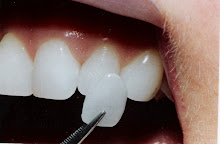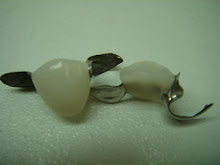 Temporomandibular Joint Disorder (TMJ or TMD) is associated with stress and involves pain that originates in the jaw or facial muscle. The temporomandibular joint, or TMJ, is the hinge between the skull and the jaw, the joint that opens and closes the mouth, making it possible for you to chew your food, swallow, speak or laugh. "True" TMJ can manifest as the breakdown or deterioration of the cartilage in the disc that comprises the joint, or bony changes in the joint space or lower jawbone. Frequently, the condition mimics arthritis and may in fact involve arthritis. One early symptom can jaw-popping, in which opening the mouth, as in a yawn, produces a clicking or popping sound.
Temporomandibular Joint Disorder (TMJ or TMD) is associated with stress and involves pain that originates in the jaw or facial muscle. The temporomandibular joint, or TMJ, is the hinge between the skull and the jaw, the joint that opens and closes the mouth, making it possible for you to chew your food, swallow, speak or laugh. "True" TMJ can manifest as the breakdown or deterioration of the cartilage in the disc that comprises the joint, or bony changes in the joint space or lower jawbone. Frequently, the condition mimics arthritis and may in fact involve arthritis. One early symptom can jaw-popping, in which opening the mouth, as in a yawn, produces a clicking or popping sound.Although we dont often realize it, the temporomandibular jointis one of the most important in the body, required for speaking, gesturing, and chewing. If the joint is injured by incessant tooth grinding, for example, it may respond favorably to anti-inflammatory drugs and arthritis medications, but surgery is recommended in advanced cases.
 The disorder can result in complaints about difficulty chweing, talking, maintaining balance, hearing, headaches, and neck or back pain. In search of relief, Americans consult a wide range of practitioners, including chiropractors, nutritionists, pain specialists, and psychologists, as well as dentists, orthodontists, and maxillofacial surgeons (surgeons who specialize in the facial bones).
The disorder can result in complaints about difficulty chweing, talking, maintaining balance, hearing, headaches, and neck or back pain. In search of relief, Americans consult a wide range of practitioners, including chiropractors, nutritionists, pain specialists, and psychologists, as well as dentists, orthodontists, and maxillofacial surgeons (surgeons who specialize in the facial bones).There is much difference of opinion about treatment options among these practitioners. Patients often consult one practitioner after another in search of relief, without satisfaction. The syndrome is often misdiagnosed and unsuccessfully treated. In some cases, orofacial pain can be treated with a combination of heat application, isometirc exercises, muscle-relaxing medications, and stress reduction.





















No comments:
Post a Comment